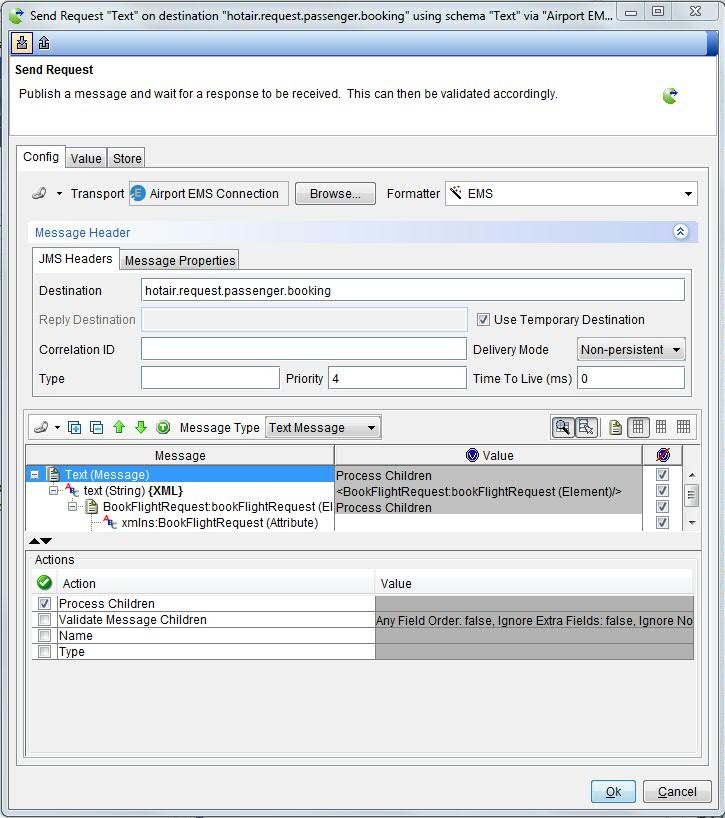Sending EMS messages
Sending EMS messages involves configure JMS headers, message properties, and a message body.
About this task
When publishing by using EMS, you must configure the message header and the message body.

Procedure
-
Configure JMS headers.
Configure the information under the JMS Headers tab.

The JMS header options are described in the following table:
Option Description Destination The destination to which the message is sent. Reply Destination An optional destination to which a message reply is sent. Use Temporary Destination To create and use a temporary destination. Correlation ID An optional ID that can be used to link messages, such as linking a response message to a request message. Delivery Mode The delivery mode to use, Persistent, or Non-persistent. Type The message type identifier. Priority A numerical ranking of the message priority, 0 - 9. Larger numbers represent higher priority. Time to Live (ms) Length of time, in milliseconds that the message lives before it expires. If set to 0, the message does not expire. If the server expiration property is set for a destination, it overrides this value.
-
Configure message properties.
Manage EMS-specific properties under the Message Properties tab.

Each property has a name, type, and value.
- To add a property, click:
 .
. - To edit an existing property, select it and click:
 .
. - To delete a property, select it and click:
 . Note: For more information, see your TIBCO documentation.
. Note: For more information, see your TIBCO documentation.
- To add a property, click:
-
Configure the EMS message body.
The contents and structure of an EMS message body varies according to the message type. To set the message type, you must select one of the options available from the Message Type drop-down menu.
